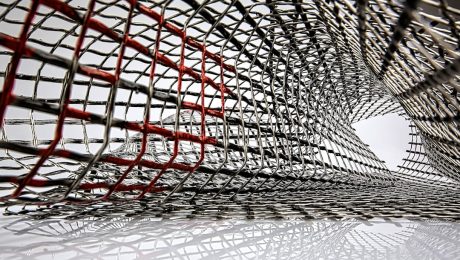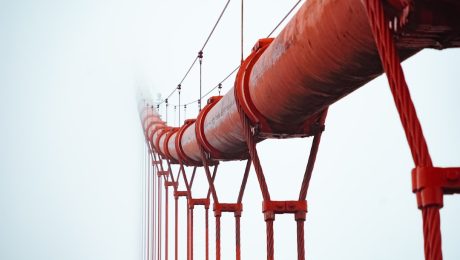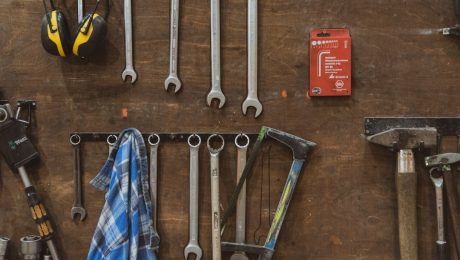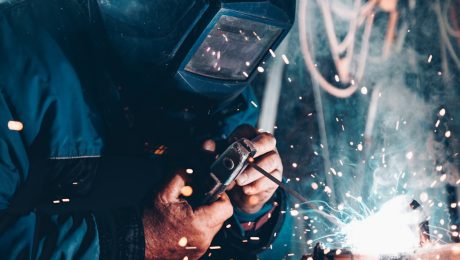Annealed wire, a marvel of metallurgical engineering, finds its place in a vast array of applications, owing to its unique properties of enhanced ductility and reduced brittleness. This process, involving controlled heating and cooling, transforms the wire’s microstructure, making it significantly more malleable and easier to work with. This blog post delves deep into the world of annealed wire, exploring its properties, manufacturing, and diverse applications across various industries.
Understanding the Annealing Process and its Impact on Wire Properties
Annealing is a heat treatment process that alters the physical and mechanical properties of a material, in this case, wire. The process involves heating the wire to a specific temperature, holding it at that temperature for a predetermined time, and then allowing it to cool slowly. This controlled heating and cooling cycle relieves internal stresses within the wire’s crystalline structure. The result is a reduction in hardness and an increase in ductility – the ability of the wire to deform under tensile stress without fracturing. The specific annealing temperature and time vary depending on the type of metal and the desired properties of the final product. For instance, copper wire annealing might involve different parameters than steel wire annealing. The precise control over these parameters is crucial for achieving the desired level of softness and flexibility.
Annealed Wire in the Electronics Industry: Precision and Reliability
The electronics industry relies heavily on annealed wire’s exceptional ductility and conductivity. Its malleability makes it ideal for intricate wiring in electronic devices, where precise bending and shaping are essential. Annealed copper wire, in particular, is a staple in circuit boards, providing reliable electrical connections. The low hardness ensures that the wire doesn’t fracture during the manufacturing process, leading to higher yields and reduced production costs. Furthermore, the consistent electrical conductivity of annealed wire ensures reliable signal transmission and prevents signal loss, a critical factor in the performance of electronic devices. From smartphones to sophisticated computers, annealed wire plays an indispensable role.
Automotive Applications: Strength, Durability, and Safety in Motion
The automotive industry utilizes annealed wire in various components, prioritizing its strength, durability, and resistance to fatigue. Annealed steel wire is commonly used in the manufacturing of springs, which are vital for suspension systems, brakes, and other critical components. The annealing process ensures that these springs can withstand repeated cycles of compression and expansion without failure, contributing significantly to the safety and reliability of vehicles. Furthermore, annealed wire is used in the production of various electrical components within the vehicle, ensuring the reliable operation of lighting systems, power windows, and other electrical systems. The consistent performance of annealed wire is crucial for maintaining the safety and functionality of modern vehicles.
Beyond Electronics and Automotive: Exploring Diverse Applications of Annealed Wire
The applications of annealed wire extend far beyond electronics and automotive. In the construction industry, annealed wire is used in reinforcement mesh for concrete, providing structural integrity and preventing cracking. The flexibility of the annealed wire allows for easy installation and adaptation to various shapes and sizes. In the medical field, annealed wire is used in the manufacturing of surgical instruments and implants, where its biocompatibility and malleability are essential. Furthermore, annealed wire is used in the production of various consumer goods, including springs in household appliances, wire mesh in filters, and decorative elements in crafts. Its versatility and adaptability make it a crucial material across a wide spectrum of industries.
Choosing the Right Annealed Wire: Material Selection and Specifications
Selecting the appropriate annealed wire depends heavily on the specific application. Factors such as the required tensile strength, ductility, conductivity, and corrosion resistance must be considered. The choice of base metal (e.g., copper, steel, aluminum) plays a significant role, as each metal possesses unique properties. Furthermore, the diameter and the level of annealing are crucial parameters that influence the wire’s final characteristics. Manufacturers often provide detailed specifications, including tensile strength, elongation, and conductivity, to assist in selecting the most suitable annealed wire for a given application. Careful consideration of these factors ensures the optimal performance and longevity of the final product.
Annealed wire is a fundamental material in numerous industries, its versatility and reliability making it an indispensable component in countless applications. Understanding its properties and applications is crucial for engineers, manufacturers, and anyone involved in the selection and use of this vital material.
SEO Tags:
- Annealed wire
- Annealing process
- Wire applications
- Copper annealed wire
- Steel annealed wire
body {
font-family: sans-serif;
line-height: 1.6;
}
h1, h2, h3 {
color: #333;
}
img {
max-width: 100%;
height: auto;
display: block;
margin: 20px auto;
}
The oil and gas industry relies heavily on sophisticated technologies to extract hydrocarbons from deep underground. Two crucial components in this process are casing and tubing – steel pipes that play vital roles in well construction, completion, and production. This comprehensive guide delves into the intricacies of casing and tubing, exploring their functions, types, materials, and installation processes.
The Essential Role of Casing in Well Construction
Casing is a series of steel pipes cemented into the wellbore. Its primary function is to provide structural support to the well, prevent the collapse of unstable formations, and isolate different geological zones. This isolation is crucial for several reasons: preventing the influx of water, gas, or other unwanted fluids into the productive zone; preventing the migration of formation fluids into the surface environment; and protecting freshwater aquifers from contamination. Casing strings are typically installed in concentric layers, with each string serving a specific purpose. The diameter of the casing decreases with depth, reflecting the decreasing diameter of the wellbore.
Different types of casing exist, each designed for specific depths and pressures. Conductor casing, for example, is the outermost pipe, primarily used to stabilize the wellhead and prevent shallow soil collapse. Surface casing protects freshwater aquifers, while intermediate and production casing handle increasing pressure and temperature at greater depths. The selection of casing depends on factors like formation pressure, depth, and wellbore stability.
Understanding Tubing: The Lifeline for Production
Once the well is cased and cemented, tubing is installed. Tubing is a smaller diameter pipe that runs inside the casing, forming the conduit for the production of hydrocarbons. It acts as the pathway for oil and gas to flow from the reservoir to the surface. Unlike casing, tubing is not cemented in place. Its primary purpose is to efficiently transport hydrocarbons to the surface, ensuring minimal pressure loss and maximizing production rates. The tubing string is often equipped with various downhole tools, such as packers, valves, and sensors, to optimize the production process.
Different types of tubing cater to specific needs. Common materials include carbon steel, stainless steel, and corrosion-resistant alloys. The choice depends on the produced fluids’ corrosive nature, temperature, and pressure conditions. The tubing’s diameter and wall thickness are carefully selected to balance flow efficiency and structural integrity.
Materials and Specifications: Choosing the Right Pipes
The selection of materials for both casing and tubing is critical. The most common material is steel, often with various alloying elements to enhance strength, corrosion resistance, and high-temperature performance. The choice depends on factors such as well depth, formation pressure, temperature, and the composition of the produced fluids. For highly corrosive environments, specialized alloys like chrome-molybdenum steel or stainless steel are used. The pipes are manufactured to rigorous specifications, ensuring dimensional accuracy, wall thickness consistency, and metallurgical properties.
These specifications are outlined in industry standards, such as API (American Petroleum Institute) standards. These standards define the dimensions, tolerances, and material properties for casing and tubing, guaranteeing consistent quality and performance across different manufacturers.
Installation and Cementing: A Precise Process
The installation of casing and tubing is a complex and carefully controlled process. Casing is lowered into the wellbore using specialized equipment, such as a top drive system. Once positioned, cement is pumped into the annular space between the casing and the wellbore wall. This cementing process is crucial for providing structural support, sealing off unwanted formations, and preventing fluid migration. The quality of the cement job is rigorously monitored to ensure proper isolation and well integrity.
Tubing is similarly lowered into the well, often after the completion of the well. Specialized tools are used to ensure proper placement and connection of the tubing joints. The tubing string may include various downhole equipment, such as packers and valves, which are carefully assembled and installed before lowering.
Challenges and Innovations in Casing and Tubing Technology
The oil and gas industry constantly faces challenges related to casing and tubing. These include high-pressure and high-temperature environments, corrosive fluids, and the need to operate in increasingly challenging geological formations. These challenges drive innovation in materials science and well construction techniques. New materials with enhanced strength, corrosion resistance, and high-temperature performance are constantly being developed. Advanced cementing techniques and improved downhole tools also play a significant role in improving well integrity and production efficiency.
Furthermore, the use of advanced simulations and modeling techniques helps optimize casing and tubing design, minimizing risks and maximizing well performance. This includes predicting potential failure points and optimizing the selection of materials and design parameters. The development of smart wells, incorporating advanced sensors and control systems, further enhances the monitoring and management of casing and tubing integrity.
In conclusion, casing and tubing are essential components in the oil and gas industry, playing a critical role in well construction, completion, and production. Understanding their functions, types, materials, and installation processes is crucial for ensuring well integrity, maximizing production efficiency, and minimizing environmental risks. Continuous innovation in materials science and well construction techniques continues to push the boundaries of what’s possible in accessing and producing hydrocarbons from increasingly challenging environments.
Tags: oil and gas casing, oil and gas tubing, well construction, drilling, petroleum engineering, API standards, downhole tools
Choosing the right steel supplier is crucial for the success of any construction, manufacturing, or engineering project. A reliable supplier ensures timely delivery of high-quality steel at competitive prices, minimizing project delays and cost overruns. This guide provides a comprehensive framework for evaluating potential steel suppliers, helping you make informed decisions and build strong, long-term partnerships.
1. Assessing Steel Quality and Certifications
Steel quality is paramount. Don’t solely rely on price; prioritize the material’s properties and conformity to standards. Request detailed certifications and test reports to verify the steel’s chemical composition, mechanical properties (tensile strength, yield strength, elongation), and conformance to relevant industry standards like ASTM, ISO, or EN. Look for suppliers who proactively provide these documents and are transparent about their quality control processes. Inquire about their quality management system (QMS) and whether they are ISO 9001 certified. A robust QMS demonstrates a commitment to consistent quality and continuous improvement. Consider requesting samples for independent testing, especially for critical applications.
2. Evaluating Supplier Reliability and Delivery Performance
Reliability is just as important as quality. Investigate the supplier’s track record. How consistently have they met delivery deadlines in the past? Request references from their existing clients to gauge their reliability and responsiveness. Consider their order fulfillment process – do they have efficient systems in place to track orders and manage logistics? Inquire about their inventory management capabilities; a supplier with sufficient stock can minimize delays. Analyze their lead times and ensure they align with your project schedule. A history of on-time delivery and proactive communication is crucial for minimizing disruptions.
3. Comparing Prices and Payment Terms
While price is a factor, it shouldn’t be the sole determining factor. Obtain quotes from multiple suppliers, ensuring that all quotes are based on the same specifications and quantities. Compare not only the unit price but also the total cost, factoring in delivery charges and any potential surcharges. Negotiate favorable payment terms, considering options like discounts for bulk orders or early payment. Be wary of excessively low prices, as they may indicate compromised quality or unreliable practices. A transparent pricing structure and clear payment terms are essential for a healthy business relationship.
4. Understanding Supplier Capacity and Capabilities
Assess the supplier’s production capacity and capabilities to meet your current and future needs. Can they handle the volume of steel required for your project? Do they possess the necessary equipment and expertise to meet your specific specifications? Inquire about their manufacturing processes and technologies to ensure they can consistently produce the required quality and quantity. For specialized steel grades or complex geometries, confirm their ability to meet your unique requirements. A supplier with adequate capacity and flexible capabilities is better positioned to handle fluctuations in demand and evolving project needs.
5. Due Diligence: Financial Stability and Ethical Practices
Before committing to a long-term partnership, conduct due diligence on the supplier’s financial stability. Check their credit rating and financial statements to ensure they are financially sound and capable of meeting their obligations. Also, consider their ethical practices and sustainability initiatives. Do they adhere to fair labor practices? Are they committed to environmental sustainability? Choosing a supplier with strong ethical credentials contributes to a positive brand image and minimizes reputational risks. Investigate their compliance with relevant environmental regulations and industry best practices.
By carefully evaluating these key aspects, you can confidently select a steel supplier that meets your project needs and contributes to your overall success. Remember that a long-term partnership with a reliable supplier is invaluable, offering cost savings, consistent quality, and peace of mind.
SEO-Friendly Tags:
- Steel Supplier Selection
- Evaluating Steel Suppliers
- Steel Quality Assurance
- Steel Supplier Reliability
- Steel Sourcing Strategies
ISO 9001:2015 is more than just a certification; it’s a framework for building a robust and efficient quality management system (QMS). This post delves into the practical application of ISO 9001, illustrating how it transforms businesses from the ground up. We’ll move beyond the theory and explore real-world examples to show you how ISO 9001 can unlock your business’s true potential.
1. Defining the Scope and Context of Your Organization
The journey to ISO 9001 certification begins with a thorough understanding of your organization’s context. This involves identifying internal and external factors that can influence your ability to meet customer requirements and achieve your objectives. Internal factors might include your organizational structure, resources, and capabilities. External factors might include market trends, regulatory changes, and competitor actions. A robust context analysis helps define the scope of your QMS, ensuring it’s tailored to your specific needs and avoids unnecessary complexities. For example, a small manufacturing company might focus its scope on production processes, while a large software development firm might include project management and customer service.
Crucially, this stage involves identifying interested parties – customers, suppliers, employees, regulators – and understanding their needs and expectations. This stakeholder analysis informs your quality policy and objectives, ensuring alignment across the entire organization. Effective communication is key throughout this process, ensuring everyone understands the importance of the ISO 9001 implementation and their role in its success.
2. Establishing Clear Processes and Procedures
Once the context is defined, the next crucial step is establishing documented processes and procedures. ISO 9001 requires a documented QMS, but this doesn’t mean endless paperwork. The goal is to create clear, concise, and easily understandable procedures for key activities. These procedures should outline the steps involved, responsibilities, and required resources. Examples include procedures for purchasing materials, managing customer complaints, conducting internal audits, and controlling documents and records.
The effectiveness of these processes should be regularly monitored and reviewed. This involves collecting data, analyzing performance, and identifying areas for improvement. Using simple tools like flowcharts and checklists can significantly improve process clarity and efficiency. For instance, a standardized procedure for handling customer returns can minimize delays and improve customer satisfaction.
3. Implementing Risk-Based Thinking
ISO 9001 emphasizes a risk-based approach to quality management. This means proactively identifying potential risks and opportunities that could affect your ability to meet customer requirements. A thorough risk assessment should be conducted, considering both internal and external factors. For each identified risk, you should determine its likelihood and potential impact. Based on this assessment, you’ll develop appropriate controls to mitigate risks and capitalize on opportunities.
Risk-based thinking isn’t about avoiding all risks; it’s about making informed decisions about which risks to prioritize and how best to manage them. For example, a manufacturing company might identify the risk of equipment failure. To mitigate this, they might implement a preventative maintenance program and establish procedures for handling equipment malfunctions.
4. Continuous Improvement through Internal Audits and Management Review
ISO 9001 isn’t a one-time event; it’s a continuous improvement cycle. Internal audits are a vital part of this cycle, providing a systematic way to assess the effectiveness of your QMS. These audits should be conducted regularly by trained internal auditors, verifying that processes are being followed and that the QMS is meeting its objectives. The findings of these audits should be documented and used to identify areas for improvement.
Management review is another crucial element. This is a high-level review of the QMS’s performance, considering both internal and external factors. It provides an opportunity for top management to review audit findings, customer feedback, and other relevant data. Based on this review, management can make strategic decisions to improve the QMS and achieve organizational objectives. The continuous feedback loop between internal audits and management review ensures ongoing refinement and optimization of the QMS.
5. Demonstrating Customer Focus and Satisfaction
Ultimately, the success of an ISO 9001 QMS is measured by its ability to meet customer needs and expectations. This requires a strong customer focus throughout the organization. This includes understanding customer requirements, proactively addressing customer concerns, and actively seeking customer feedback. Regular customer satisfaction surveys, feedback mechanisms, and complaint handling procedures are crucial for understanding customer needs and identifying areas for improvement.
By consistently demonstrating a commitment to customer satisfaction, businesses can build trust, loyalty, and a strong competitive advantage. ISO 9001 certification provides a framework for achieving this, demonstrating to customers a commitment to quality and continuous improvement. This can lead to increased customer retention, positive word-of-mouth referrals, and ultimately, business growth.
Implementing an ISO 9001 quality system is a journey, not a destination. It requires commitment, resources, and a willingness to embrace continuous improvement. However, the benefits – improved efficiency, enhanced customer satisfaction, and increased competitiveness – make it a worthwhile investment for any organization.
SEO Tags:
ISO 9001, Quality Management System, QMS, ISO 9001 implementation, Business Excellence
From the earliest steam locomotives to the high-speed trains of today, steel has been the backbone of railway infrastructure. Its strength, durability, and versatility have made it an indispensable material in the construction and operation of railways worldwide. This post delves into the multifaceted role of steel in various aspects of railway systems.
1. Steel Rails: The Foundation of Railway Tracks
The most visible application of steel in railway infrastructure is undoubtedly the rails themselves. These long, continuous steel beams provide the track on which trains run. The steel used for rails must possess exceptional strength and wear resistance to withstand the immense forces generated by passing trains, especially heavy freight trains. Commonly used steel grades include high-carbon steel and various alloy steels, often containing manganese, chromium, and molybdenum to enhance hardness, toughness, and fatigue resistance. The manufacturing process involves careful heat treatment to achieve the desired mechanical properties. Continuous casting and rolling are employed to produce long lengths of rail, minimizing the number of joints and improving track smoothness.
2. Steel in Railway Bridges: Spanning the Gaps
Railways often traverse challenging terrains, necessitating the construction of bridges. Steel plays a pivotal role in bridge construction, offering the strength and flexibility needed to span rivers, valleys, and other obstacles. Steel bridges can be built using various designs, including truss bridges, girder bridges, and arch bridges. High-strength steel alloys are often employed to minimize the weight of the bridge structure while maintaining its load-bearing capacity. The design and construction of steel railway bridges require meticulous engineering to ensure structural integrity and safety under varying environmental conditions and heavy loads.
3. Steel in Rolling Stock: Building the Trains
Beyond the track and bridges, steel forms the very essence of railway rolling stock – the trains themselves. From the chassis and bogies (undercarriages) to the car bodies and various components, steel provides the structural integrity and strength needed to withstand the dynamic forces of train operation. High-strength low-alloy (HSLA) steels are frequently used due to their excellent strength-to-weight ratio, allowing for lighter yet robust train carriages. Welding techniques are crucial in assembling the various steel components of rolling stock, ensuring strong and reliable joints.
4. Steel in Railway Signaling and Safety Systems
Safety is paramount in railway operations, and steel plays a critical role in various signaling and safety systems. Steel components are used in the construction of signal masts, switch mechanisms, and other safety-related infrastructure. The durability and resistance to corrosion of steel ensure the long-term reliability of these essential systems. The precise engineering and manufacturing of steel components are essential for the smooth and safe operation of railway signaling and control systems.
5. The Future of Steel in Railway Infrastructure: Innovations and Sustainability
The railway industry is constantly evolving, and the role of steel is adapting to meet new challenges and opportunities. Research and development are focused on developing new steel alloys with enhanced properties, such as increased strength, improved corrosion resistance, and enhanced weldability. Sustainable practices are also gaining prominence, with efforts to reduce the carbon footprint of steel production and improve the recyclability of steel components at the end of their lifespan. The use of lighter steel alloys contributes to energy efficiency in train operation, reducing fuel consumption and emissions. Furthermore, advancements in steel manufacturing processes are leading to improved efficiency and reduced waste, contributing to a more sustainable railway industry.
In conclusion, steel’s contribution to railway infrastructure is undeniable. Its strength, durability, and versatility have been instrumental in the development of efficient, safe, and reliable railway systems worldwide. As the railway industry continues to evolve, steel will remain a cornerstone material, constantly adapting and innovating to meet the challenges of the future.
SEO Tags:
- Steel Railway Infrastructure
- Railway Steel Applications
- Steel in Rail Transportation
- Railway Bridge Steel
- Steel Rail Manufacturing
Pipe bending and straightening are crucial processes in various industries, from construction and manufacturing to oil and gas. Achieving precise bends and ensuring straightness is essential for functionality, safety, and aesthetics. This comprehensive guide explores the different methods, tools, and considerations involved in mastering these techniques.
1. Understanding Pipe Material and its Impact on Bending and Straightening
The material of the pipe significantly influences the bending and straightening process. Different materials exhibit varying degrees of flexibility, ductility, and strength. Steel pipes, for example, require more force and specialized equipment for bending compared to more malleable materials like copper or aluminum. Understanding the material’s properties is crucial for selecting the appropriate bending and straightening techniques to avoid damage or failure. Factors to consider include:
- Yield Strength: The point at which the pipe begins to deform permanently.
- Tensile Strength: The maximum stress the pipe can withstand before breaking.
- Ductility: The ability of the pipe to deform plastically before fracturing.
- Wall Thickness: Thicker walls require more force and may necessitate different bending techniques.
- Pipe Diameter: Larger diameter pipes require more significant bending force and potentially specialized equipment.
Incorrectly assessing the material properties can lead to cracked pipes, kinks, or overall structural weakness.
2. Exploring Different Pipe Bending Methods
Several methods exist for bending pipes, each suited to different materials, diameters, and desired bend radii. These include:
- Manual Bending: Suitable for smaller diameter, softer pipes, often using hand tools like pipe benders. This method is labor-intensive and may not achieve high precision.
- Hydraulic Bending: Uses hydraulic presses to apply controlled force, allowing for precise bends in various pipe materials and diameters. This method is highly versatile and efficient.
- Rotary Draw Bending: A highly precise method that uses a rotating die to pull the pipe through, creating a smooth, consistent bend. This is ideal for tight radius bends and high-quality finishes.
- Roll Bending: Uses three rolls to progressively bend the pipe. This method is suitable for large-diameter pipes and long bends.
- Induction Bending: Uses localized heating to soften the pipe material before bending, allowing for sharper bends in thicker-walled pipes. This requires specialized equipment.
The choice of bending method depends on factors such as material properties, desired bend radius, production volume, and budget.
3. Effective Techniques for Pipe Straightening
Straightening bent pipes requires careful consideration of the material and the extent of the bend. Common methods include:
- Mechanical Straightening: Uses specialized straightening machines that apply controlled force to gradually straighten the pipe. This method offers high precision and is suitable for various pipe materials and sizes.
- Hydraulic Straightening: Employs hydraulic presses to apply controlled pressure, gently straightening the pipe without causing damage. This method is effective for larger diameter pipes and those with significant bends.
- Manual Straightening (for minor bends): For minor bends in smaller, softer pipes, manual straightening with tools like hammers and mallets might be feasible. This method requires skill and caution to avoid causing further damage.
- Heat Straightening: Involves localized heating to soften the bent area before applying straightening force. This method is useful for stubborn bends but requires expertise to avoid overheating and material damage.
Choosing the correct straightening method is crucial to avoid damaging the pipe and compromising its structural integrity. Over-straightening can lead to weakening of the pipe.
4. Essential Tools and Equipment for Pipe Bending and Straightening
The tools and equipment required depend on the chosen bending and straightening methods. Essential tools may include:
- Pipe Benders (handheld, hydraulic): For various pipe sizes and materials.
- Hydraulic Presses: For more powerful bending and straightening.
- Roll Bending Machines: For large-diameter pipes.
- Induction Heating Units: For heat bending.
- Straightening Machines: For precise straightening.
- Measuring Tools (calipers, tape measures): To ensure accuracy.
- Safety Gear (gloves, eye protection): To protect the operator.
Investing in high-quality tools and equipment is crucial for achieving precise and efficient results and ensuring operator safety.
5. Safety Precautions and Best Practices
Pipe bending and straightening can be hazardous if not handled correctly. Always prioritize safety by:
- Wearing appropriate safety gear: Gloves, eye protection, and hearing protection are essential.
- Using the correct tools and equipment: Ensure that the tools are in good condition and appropriate for the task.
- Following manufacturer’s instructions: Always adhere to the instructions provided with the tools and equipment.
- Working in a well-ventilated area: Some processes may generate fumes or dust.
- Properly securing the pipe: To prevent accidental slippage or injury.
- Regular maintenance of equipment: Ensuring equipment is in good working order prevents accidents.
By following these safety precautions, you can minimize the risk of accidents and injuries.
This guide provides a comprehensive overview of pipe bending and straightening solutions. Remember to always prioritize safety and choose the appropriate methods and tools based on the specific requirements of your project.
Tags: pipe bending, pipe straightening, hydraulic bending, pipe bending machine, pipe straightening techniques
Construction nails are seemingly simple components, yet their quality and proper selection are crucial for the structural integrity and longevity of any building project. From framing a house to installing siding, the right nail ensures a secure and lasting bond. This comprehensive guide delves into the standards and durability aspects of construction nails, helping you make informed choices for your next project.
Understanding Construction Nail Materials and Their Impact on Durability
The material of a construction nail significantly impacts its durability and holding power. Common materials include:
- Steel: The most common material, offering a good balance of strength, cost-effectiveness, and availability. Steel nails can be further categorized by their coating (galvanized, stainless steel, etc.), which affects their resistance to corrosion.
- Aluminum: Lighter than steel, aluminum nails are often preferred for applications where weight is a concern or where corrosion resistance is paramount, such as in marine environments or near chemicals. However, they are generally less strong than steel nails.
- Brass: Used primarily for decorative purposes or in applications requiring high corrosion resistance. Brass nails are relatively expensive.
- Copper: Similar to brass, copper nails offer excellent corrosion resistance but are less common due to cost. Often used in specialized applications.
Choosing the right material depends on the specific application, environmental conditions, and desired lifespan of the construction.
Decoding Construction Nail Size and Gauge Specifications
Construction nails are categorized by their size, expressed in terms of length and gauge (diameter). The length is typically measured in inches or centimeters, and the gauge indicates the thickness of the nail shaft. Lower gauge numbers represent thicker nails, and higher gauge numbers represent thinner nails. For example, a “16d common nail” refers to a specific length and gauge, with the “d” representing “penny,” an archaic unit of measurement still used in the industry.
Understanding these specifications is vital for selecting nails appropriate for the material being fastened and the required holding power. Thicker nails are generally better for harder woods and heavier loads, while thinner nails might suffice for lighter applications like siding or trim.
Common nail size charts are readily available online and in hardware stores, providing a quick reference for various applications.
The Role of Nail Coatings in Enhancing Durability and Preventing Corrosion
Nail coatings play a crucial role in enhancing durability and preventing corrosion. Common coatings include:
- Galvanized: A zinc coating that provides excellent corrosion resistance, making these nails suitable for outdoor applications and environments with high humidity.
- Stainless Steel: Offers superior corrosion resistance compared to galvanized nails, making them ideal for extremely harsh environments or where long-term corrosion protection is critical.
- Electroplated: Various metals, such as zinc, copper, or nickel, can be electroplated onto nails to enhance their appearance and corrosion resistance.
- Hot-Dip Galvanized: A process where nails are immersed in molten zinc, resulting in a thicker and more durable coating than electro-galvanized nails. This offers superior protection against corrosion.
The choice of coating depends on the specific application and the level of corrosion protection required.
Testing Methods and Standards for Construction Nail Performance
Various standards and testing methods are used to assess the performance and durability of construction nails. These tests evaluate aspects such as:
- Tensile Strength: Measures the nail’s resistance to being pulled out of the material.
- Shear Strength: Assesses the nail’s resistance to forces that try to slide it sideways.
- Withdrawal Resistance: Determines the force required to pull the nail out of the wood.
- Corrosion Resistance: Evaluates the nail’s ability to withstand exposure to various environmental factors.
Organizations like ASTM International (ASTM) develop and publish standards for construction nails, ensuring consistent quality and performance across different manufacturers.
Choosing the Right Construction Nails for Your Project: A Practical Guide
Selecting the appropriate construction nails involves considering several factors:
- Material being fastened: Hardwoods require stronger nails than softwoods.
- Load-bearing requirements: Heavier loads necessitate stronger and longer nails.
- Environmental conditions: Outdoor applications require corrosion-resistant nails.
- Aesthetic considerations: In visible applications, the nail’s head and finish might be important.
- Budget: The cost of nails can vary significantly based on material and coatings.
By carefully considering these factors, you can ensure that you select the right nails for your project, leading to a structurally sound and long-lasting result.
Remember to always consult relevant building codes and standards for your region to ensure compliance and safety.
SEO Keywords: Construction nails, nail gauge, nail length, nail durability, corrosion resistance, construction standards, ASTM standards, nail coatings, galvanized nails, stainless steel nails.
body {
font-family: sans-serif;
line-height: 1.6;
}
h1, h2, h3 {
color: #333;
}
The safe and efficient transportation of natural gas relies heavily on the integrity of the pipelines. Corrosion is a significant threat, leading to leaks, environmental damage, and potential safety hazards. To combat this, various protective coatings are applied to gas pipelines, with epoxy (EP), polypropylene (PP), and polyethylene (PE) coatings being among the most prevalent. This comprehensive guide delves into the specifics of these coatings, their applications, and their crucial role in ensuring pipeline longevity and safety.
Understanding Epoxy (EP) Coated Pipes for Gas Pipelines
Epoxy coatings are thermosetting polymers known for their excellent adhesion, chemical resistance, and mechanical strength. They offer superior protection against corrosion caused by soil, water, and other aggressive environments. EP coatings are typically applied using a fusion-bonded epoxy (FBE) process, creating a robust, uniform layer that adheres tightly to the pipe’s surface. This process involves meticulously cleaning the pipe, applying the epoxy powder, and then curing it in a controlled environment using heat and pressure. The thickness of the FBE coating varies depending on the application and the specific requirements of the pipeline. Thicker coatings offer greater protection against more aggressive environments.
One key advantage of FBE coatings is their ability to withstand high temperatures and pressures, making them suitable for high-pressure gas pipelines. However, they can be susceptible to damage from mechanical impact, requiring careful handling during transportation and installation. Proper surface preparation is critical for optimal adhesion and performance. Any imperfections in the pipe’s surface can compromise the integrity of the coating and lead to premature failure.
Polypropylene (PP) Coated Pipes: A Durable Solution
Polypropylene (PP) coatings offer a different set of advantages, primarily their excellent resistance to abrasion and impact. PP coatings are applied using extrusion or powder coating methods. The extruded PP coating provides a continuous, seamless layer that protects the pipe from physical damage. Powder coating techniques, while offering a similar protective layer, can be more cost-effective for certain applications. PP coatings are commonly used in areas where the pipeline is subjected to high levels of mechanical stress, such as areas with rocky terrain or where the pipeline is exposed to significant vibrations.
PP coatings also exhibit good chemical resistance, though not as extensive as epoxy coatings. They are particularly suitable for applications where the pipeline might experience abrasion from soil movement or external forces. The flexibility of PP also makes it suitable for pipelines that need to withstand bending or flexing during installation.
Polyethylene (PE) Coated Pipes: Cost-Effective Protection
Polyethylene (PE) coatings are a more cost-effective option compared to epoxy and polypropylene. They are applied using extrusion methods, resulting in a smooth, continuous layer of plastic that protects the pipe from corrosion. PE coatings are commonly used in less aggressive environments where the primary concern is corrosion prevention. Their flexibility and ease of installation make them suitable for a wide range of applications.
While PE coatings offer good corrosion protection, they are less resistant to abrasion and impact compared to PP coatings. Their performance in high-temperature or high-pressure applications may also be limited compared to epoxy coatings. Therefore, the suitability of PE coatings needs to be carefully assessed based on the specific environmental conditions and operational requirements of the gas pipeline.
Comparing EP, PP, and PE Coatings: Choosing the Right Protection
The choice between EP, PP, and PE coatings depends on several factors, including the environmental conditions, the pipeline’s operating pressure and temperature, the budget, and the specific requirements of the project. Epoxy coatings offer superior corrosion resistance and are ideal for high-pressure, high-temperature applications. Polypropylene coatings provide excellent abrasion and impact resistance, making them suitable for harsh environments with potential for physical damage. Polyethylene coatings offer a cost-effective solution for applications with less stringent requirements.
A comprehensive risk assessment should be conducted to determine the most appropriate coating for a particular gas pipeline project. This assessment should consider factors such as soil chemistry, potential for mechanical damage, and the overall operational requirements of the pipeline.
Installation and Maintenance of Coated Pipes
Proper installation is crucial for the effectiveness of any coating system. Careful handling during transportation and installation is essential to avoid damaging the coating. Special precautions should be taken to prevent scratches, dents, or other types of mechanical damage that can compromise the coating’s integrity. The installation process should adhere to industry best practices and relevant standards to ensure a long service life.
Regular inspection and maintenance are also crucial for maintaining the integrity of the coated pipeline. Regular inspections can help identify any potential problems early on, allowing for timely repairs and preventing costly failures. Proper maintenance practices can significantly extend the lifespan of the pipeline and ensure its continued safe and efficient operation.
Choosing the right coated pipe for your gas pipeline project is a critical decision impacting safety, longevity, and cost-effectiveness. Understanding the unique properties of EP, PP, and PE coatings allows for informed decision-making, leading to a robust and reliable gas transportation infrastructure.
SEO Tags:
- EP coated pipes
- PP coated pipes
- PE coated pipes
- Gas pipeline coatings
- Corrosion protection pipelines
The steel industry is constantly evolving, driven by the relentless pursuit of enhanced performance and functionality. This has led to the development of high value-added steel products – materials that go beyond basic steel, offering superior properties tailored to specific applications. This comprehensive guide delves into the fascinating world of these advanced materials, exploring their characteristics, manufacturing processes, diverse applications, and their significant impact on various industries.
1. Defining High Value-Added Steel: Beyond the Basics
High value-added steel isn’t simply a stronger or more durable version of conventional steel. It’s characterized by a combination of enhanced properties achieved through sophisticated alloying, processing, and manufacturing techniques. These improvements often translate to superior strength, corrosion resistance, heat resistance, wear resistance, or a unique combination of these properties. Unlike commodity steel, which is mass-produced and standardized, high value-added steel is often customized to meet the exact requirements of a specific application. This customization, along with the advanced processes involved, results in a higher cost per ton but significantly improved performance and longevity, justifying the premium price.
Examples include advanced high-strength steels used in automotive components for weight reduction and improved safety, stainless steels with enhanced corrosion resistance for demanding environments like chemical processing plants, and tool steels with exceptional hardness and wear resistance for manufacturing tools and dies.
2. Key Properties and Alloying Elements
The superior properties of high value-added steel are achieved through careful selection and precise control of alloying elements. These elements are added to the base iron-carbon steel to modify its microstructure and consequently its mechanical, physical, and chemical properties. Common alloying elements include:
- Chromium (Cr): Enhances corrosion resistance and hardness.
- Nickel (Ni): Improves strength, toughness, and corrosion resistance.
- Molybdenum (Mo): Increases hardenability and high-temperature strength.
- Vanadium (V): Enhances strength and toughness, particularly at high temperatures.
- Manganese (Mn): Improves strength and hardenability.
- Silicon (Si): Increases strength and improves magnetic properties.
The specific combination and proportions of these elements determine the final properties of the steel, allowing for fine-tuning to meet specific application requirements. Advanced techniques like micro-alloying allow for even greater control over the steel’s microstructure and properties.
3. Manufacturing Processes: Precision and Innovation
The production of high value-added steel often involves sophisticated and precise manufacturing processes that go beyond the basic methods used for commodity steel. These processes are crucial in achieving the desired properties and ensuring consistency in quality. Some key techniques include:
- Vacuum Induction Melting (VIM): Removes impurities and allows for precise control of alloying elements, resulting in cleaner and more homogeneous steel.
- Electroslag Remelting (ESR): Further refines the steel, improving its cleanliness and homogeneity, and reducing inclusions.
- Controlled Rolling and Cooling: Precise control of the rolling and cooling processes allows for the manipulation of the steel’s microstructure, leading to specific mechanical properties.
- Thermomechanical Processing (TMP): A combination of thermal and mechanical treatments to optimize the microstructure and achieve enhanced properties.
- Advanced Heat Treatments: Precisely controlled heating and cooling cycles to achieve the desired hardness, strength, and toughness.
These advanced manufacturing techniques are essential in producing high-quality, consistent, and reliable high value-added steel products.
4. Diverse Applications Across Industries
The versatility of high value-added steel makes it indispensable across a wide range of industries. Its superior properties enable the creation of products that are stronger, lighter, more durable, and more resistant to various environmental factors. Some key application areas include:
- Automotive Industry: High-strength steels are used in car bodies, chassis components, and safety features to improve fuel efficiency and safety.
- Aerospace Industry: High-temperature and corrosion-resistant steels are critical for aircraft components and engine parts.
- Energy Sector: Stainless steels and other specialized steels are used in power generation equipment, pipelines, and oil and gas extraction facilities.
- Medical Industry: Biocompatible stainless steels are used in surgical instruments, implants, and medical devices.
- Construction Industry: High-strength and corrosion-resistant steels are used in bridges, skyscrapers, and other large-scale construction projects.
- Manufacturing Industry: Tool steels are essential for the production of various tools and dies used in manufacturing processes.
The demand for high value-added steel is driven by the increasing need for advanced materials in these and other industries.
5. Market Trends and Future Outlook
The market for high value-added steel is experiencing significant growth, driven by factors such as increasing demand from emerging economies, technological advancements, and the need for sustainable and efficient materials. Key trends include:
- Lightweighting: The automotive and aerospace industries are driving demand for high-strength, lightweight steels to improve fuel efficiency and reduce emissions.
- Increased Corrosion Resistance: The need for materials that can withstand harsh environments is driving demand for advanced stainless steels and other corrosion-resistant steels.
- Advanced Manufacturing Techniques: The development of new manufacturing processes is leading to the production of even more sophisticated and high-performance steels.
- Sustainability: The focus on sustainability is driving the development of steels with improved recyclability and reduced environmental impact.
- Smart Materials: Research and development efforts are focused on creating smart steels with self-healing capabilities and other advanced functionalities.
The future of high value-added steel looks bright, with continuous innovation and technological advancements promising even more advanced and versatile materials to meet the evolving needs of various industries.
SEO-Friendly Tags:
- High Value-Added Steel
- Advanced Steel Products
- Specialty Steels
- Steel Alloys
- High-Strength Steel Applications
In a world increasingly conscious of hygiene and infection control, the development of antibacterial surfaces is paramount. Antibacterial steel, with its inherent durability and now enhanced antimicrobial properties, is emerging as a significant player in this field. This post delves into the science behind antibacterial steel, its applications, benefits, limitations, and future prospects.
The Science Behind Antibacterial Steel
Traditional stainless steel, while resistant to corrosion and relatively easy to clean, doesn’t inherently kill bacteria. Antibacterial properties are achieved through various methods, primarily involving the addition of antimicrobial agents to the steel’s composition or through surface modification techniques. One common approach involves incorporating silver ions (Ag+) into the steel matrix. Silver ions are known for their potent antimicrobial activity, disrupting bacterial cell membranes and inhibiting their growth. This can be achieved through alloying, where silver is directly incorporated into the steel during the manufacturing process, or through surface deposition techniques, such as sputtering or ion implantation, which deposit a thin layer of silver onto the steel surface. Other antimicrobial agents, such as copper or zinc, are also being explored for their potential use in antibacterial steel.
Applications of Antibacterial Steel in Various Industries
The antimicrobial properties of antibacterial steel make it highly suitable for a wide range of applications where hygiene is crucial. In the healthcare industry, it can be used for countertops, sinks, medical equipment, and handrails, reducing the risk of hospital-acquired infections (HAIs). Food processing plants benefit greatly from antibacterial steel surfaces, preventing bacterial contamination and improving food safety. Public spaces, such as airports, train stations, and shopping malls, can also utilize antibacterial steel for frequently touched surfaces like door handles and elevator buttons, minimizing the spread of germs. Even in the home, antibacterial steel can be incorporated into kitchen appliances and bathroom fixtures to enhance hygiene and cleanliness.
Benefits of Choosing Antibacterial Steel
The advantages of using antibacterial steel are numerous. Beyond its inherent antimicrobial properties, it offers several key benefits. Its durability ensures longevity and reduces the need for frequent replacements, unlike some other antimicrobial materials. It’s relatively easy to clean and maintain, further contributing to its effectiveness in infection control. The long-lasting antimicrobial effect reduces the need for constant sanitization, saving time and resources. In healthcare settings, this translates to a reduction in HAIs, improved patient outcomes, and lower healthcare costs. In food processing, it safeguards product quality and minimizes waste caused by contamination. The aesthetic appeal of stainless steel also adds to its desirability in various applications.
Limitations and Considerations of Antibacterial Steel
While antibacterial steel offers significant advantages, it’s important to acknowledge its limitations. The effectiveness of the antimicrobial properties can vary depending on the method of incorporation and the concentration of the antimicrobial agent. The durability of the antimicrobial layer might degrade over time due to wear and tear, especially in high-traffic areas. The initial cost of antibacterial steel can be higher than that of regular stainless steel, though the long-term cost savings from reduced maintenance and replacement might offset this. Furthermore, the potential for the development of antimicrobial resistance remains a concern, although research is ongoing to address this issue. Appropriate cleaning and disinfection protocols should still be followed, even with antibacterial steel, to maintain optimal hygiene.
The Future of Antibacterial Steel and Ongoing Research
Research and development in antibacterial steel are continuously evolving. Scientists are exploring new antimicrobial agents and surface modification techniques to improve the effectiveness and longevity of the antimicrobial properties. The focus is on developing sustainable and environmentally friendly methods for producing antibacterial steel. Nanotechnology plays a significant role in enhancing the antimicrobial efficacy and durability of these surfaces. The integration of smart sensors that monitor bacterial growth and trigger automated cleaning systems is also a promising area of research. The future of antibacterial steel holds immense potential for revolutionizing hygiene and infection control across various sectors.
Tags: Antibacterial Steel, Antimicrobial Steel, Stainless Steel, Hygiene, Infection Control, Healthcare, Food Safety, Public Health










